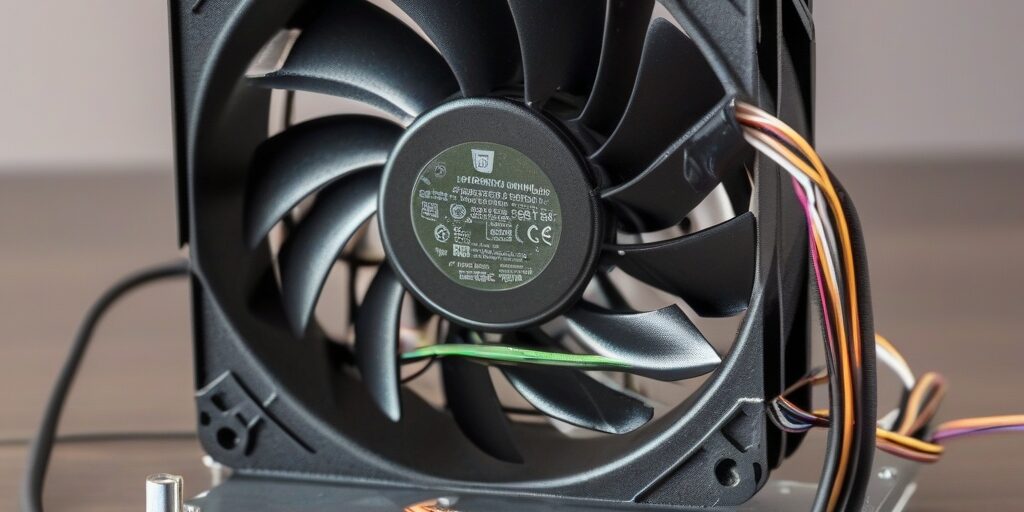A failing CPU fan can spell disaster for your computer. The CPU, or central processing unit, generates significant heat during operation, and without adequate cooling, it can overheat, leading to performance issues or permanent damage.
In this guide, we’ll show you how to identify a failing CPU fan and walk you through the process of replacing it. Whether your fan is making strange noises or your PC is experiencing random shutdowns, we’ve got you covered with practical solutions to restore optimal cooling and protect your system.
Signs Your CPU Fan Is Failing
1. Common Warning Signs
- Unusual Noises: Grinding, clicking, or loud whirring sounds can indicate mechanical issues.
- Overheating: If your PC becomes unusually hot or shuts down unexpectedly, the fan may not be functioning correctly.
- Reduced Performance: Thermal throttling can slow down your CPU to prevent damage from overheating.
- Fan Not Spinning: A fan that doesn’t spin when the PC is powered on is a clear sign of failure.
2. Monitoring Software Alerts
- Use tools like HWMonitor or SpeedFan to check CPU temperature and fan speed. High temperatures combined with low or no fan activity indicate a problem.
Why a Functioning CPU Fan Is Crucial
1. Prevents Overheating
The CPU generates heat that can damage internal components if not properly managed.
2. Ensures Optimal Performance
Efficient cooling allows the CPU to maintain consistent performance without throttling.
3. Prolongs Hardware Lifespan
Overheating can shorten the lifespan of your CPU and other critical components, leading to costly repairs or replacements.
Steps to Diagnose CPU Fan Issues
1. Checking Fan Speed
- Open BIOS or UEFI settings during startup to check fan speed readings.
- Use third-party software like SpeedFan to monitor fan performance in real time.
2. Listening for Unusual Noises
- Power on your PC and listen for grinding or rattling sounds from the fan.
- Intermittent noises may suggest worn bearings or debris interference.
How to Replace a Failing CPU Fan
1. Tools You’ll Need
- Phillips-head screwdriver
- Thermal paste
- Replacement CPU fan or heatsink
- Isopropyl alcohol and a lint-free cloth
2. Step-by-Step Replacement Guide
- Power Down and Unplug Your PC: Ensure all power sources are disconnected.
- Access the CPU Fan:
- Open the PC case by removing the side panel.
- Locate the CPU cooler attached to the motherboard.
- Remove the Old Fan:
- Disconnect the fan cable from the motherboard.
- Unscrew or unclip the fan assembly carefully.
- Clean the CPU Surface:
- Use isopropyl alcohol and a lint-free cloth to clean off old thermal paste.
- Apply New Thermal Paste:
- Apply a small, pea-sized amount of thermal paste to the CPU surface.
- Install the New Fan:
- Attach the replacement fan to the CPU cooler.
- Secure the fan using screws or clips and reconnect the power cable.
- Test the Fan:
- Reassemble the case and power on your PC to ensure the fan operates correctly.
Alternative Cooling Solutions for CPUs
1. Liquid Cooling Systems
- Provides superior cooling performance and quieter operation.
- Ideal for high-performance PCs and gaming rigs.
2. Upgrading to High-Performance Fans
- Opt for fans with high airflow and low noise ratings for better cooling efficiency.
- Consider brands like Noctua or be quiet! for premium solutions.
Preventative Maintenance Tips for CPU Cooling
1. Regular Cleaning
- Dust your PC’s interior, including the CPU fan, at least every three months.
- Use compressed air to clean hard-to-reach areas.
2. Monitoring Fan Performance
- Periodically check fan speed and CPU temperatures using monitoring software.
- Address issues promptly to avoid long-term damage.
Conclusion and Call to Action
A failing CPU fan can jeopardise your computer’s performance and longevity, but identifying and replacing it doesn’t have to be daunting. With this guide, you can diagnose issues, replace the fan, and explore alternative cooling options to ensure your system stays cool and efficient.
Call to Action:
Experiencing issues with your CPU fan? At Perth Computer Experts, we specialise in diagnosing and replacing faulty hardware. Contact us today for professional assistance and reliable cooling solutions to keep your PC running smoothly.



